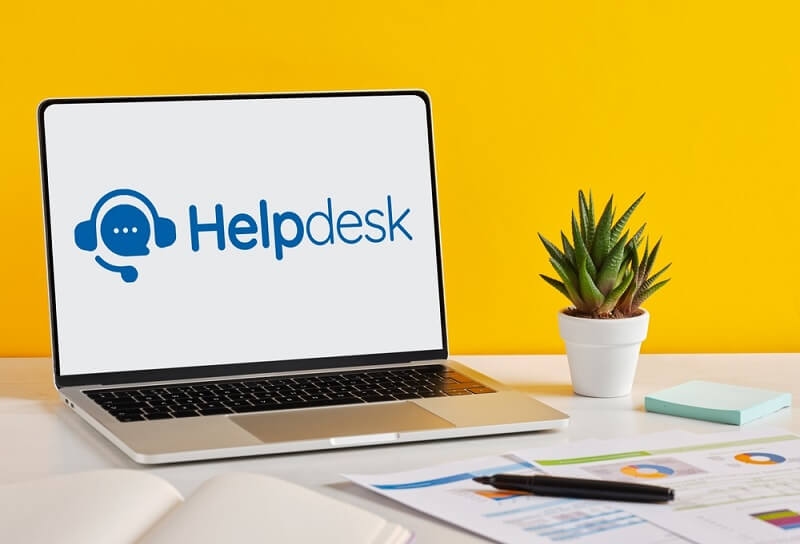
Offering quick, efficient, and reliable customer support is no longer optional; it is a competitive necessity for every company. Whether you are a startup or a medium-sized business, having the right technology in place can be the difference between your support team flourishing and flailing. Helping your support team flourish begins with selecting the right IT helpdesk software for better customer support.
The market for cloud-based helpdesk platforms, remote support software, and helpdesk automation tools is differentiated as oversaturated with options to help improve and optimize the service delivery process. Not all options are created equal, however. This guide will help you analyze your company needs, view features side by side, and make a more informed decision with consideration for ticketing system comparison in the USA, help desk software pricing, and future scalability.
An IT helpdesk software solution is a tool that centralizes, tracks, and resolves customer issues. It rejects various emails, lost chats, and unstructured packages, replacing them with a skeleton of details to create a centralized location that can leverage the benefits of storage for you and your customers' benefit.
Features and Advantages:
As the world increasingly focuses on the customer, a solid help desk system can be the heart of your current support systems.
Before choosing a system, you must understand the spectrum of available help desk tools.
The software is installed and maintained on your servers. You have total control and can customize it using your IT.
The software is hosted on the vendor's cloud servers; you access it via a web browser. These tools have become increasingly popular because they are affordable, scalable, and require minimal maintenance from your internal IT team.
Open source is free and completely customizable; however, organizations typically need a technically savvy person to deploy and maintain it.
For many companies in 2025, cloud-based help desk platforms give your organization the best possible compromise in price, time to implement, and usability.

Whether comparing vendors or building a short list, focus on features directly impacting performance and user experience.
Your helpdesk should include a strong ticketing system to organize and prioritize customer issues.
Key capabilities:
Customers expect support through various channels like email, phone, live chat, social media, and SMS.
Look for tools that:
Automation saves time and reduces human error.
Useful automations include
Allowing users to find answers on their own can drastically reduce ticket volumes.
Make sure your software includes:
For IT teams, remote access tools are critical to diagnosing and fixing technical issues without being physically present.
Look for:
Conducting a thorough comparison of ticketing systems in the USA can help identify the best solutions based on local business needs, compliance, and support options.
Some U.S.-based vendors may also offer integrations tailored for domestic industries such as healthcare, finance, and education.
Cost matters, but it's not just about the cheapest option. You must consider long-term value, scalability, and what's included in each pricing tier.
When evaluating help desk software pricing, factor in
Automation is no longer a luxury. It’s essential for scaling your support function without adding headcount.
These helpdesk automation tools help reduce response times and eliminate routine tasks, freeing your agents to focus on complex issues.
Integrating remote support software is a game-changer if your help desk handles technical issues.
Whether fixing printers or resolving VPN errors, remote access tools minimize downtime and improve customer satisfaction.
Your help desk software should grow with your business. Please look for platforms that can handle increasing ticket volume, more agents, and complex workflows without significant rework.
Smooth integration ensures your help desk becomes part of a unified customer support ecosystem.
Good decisions come from good data. Advanced helpdesk platforms offer reporting tools that help you track, improve, and predict support performance.
Please look for customizable dashboards and export options for presentations or compliance audits.
In an age where data breaches are common, ensuring the security of your support system is non-negotiable.
For U.S. businesses, ensure compliance with
Choosing a provider that understands regional regulations can reduce legal risk and build customer trust.
Even the best tool is useless without good onboarding. Could you evaluate how well the vendor supports new customers?
Could you check user reviews to understand what post-sale support looks like in reality, not just in marketing copy?
A growing software company struggled with customer support fragmentation. Agents tracked issues using multiple email inboxes and spreadsheets.
They implemented a cloud-based helpdesk platform with ticketing automation, remote access, and CRM integration.
This case shows that even modest changes can yield significant improvements with the right platform.
Choosing the right IT helpdesk software has far-reaching implications, especially regarding customer satisfaction and efficiency. As you weigh IT helpdesk automation software options, remote IT support software, and even cloud-based helpdesk software, you will find a solution that meets your priorities and organizational objectives.
Please take the time to research, identify the most critical features, and consider help desk software pricing before deciding. Your new help desk software will benefit your support people and your teams' productivity and overall customer experience.
If you are ready to update your IT support, start looking now!
This content was created by AI